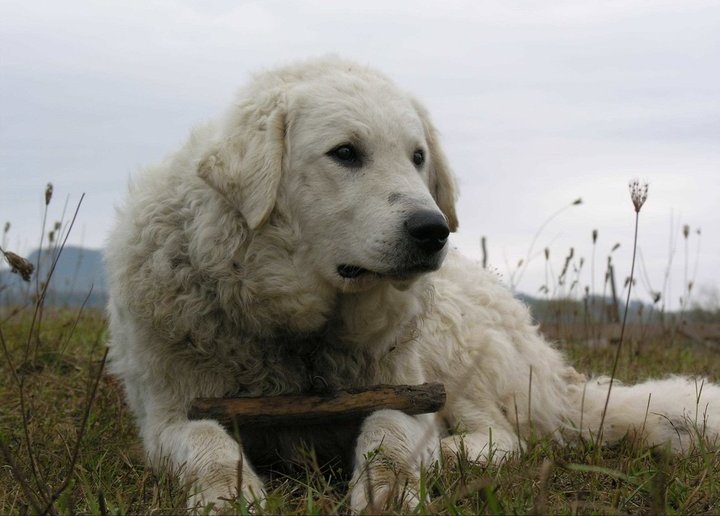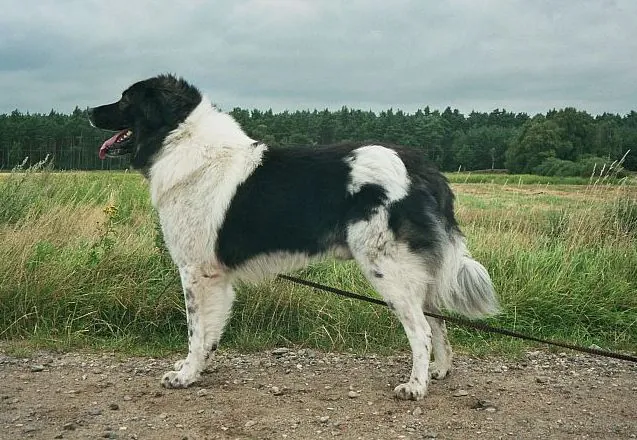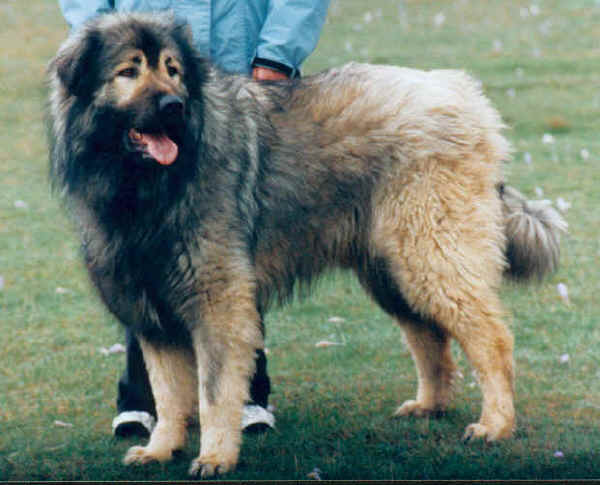Saarloos Wolfdog
The Saarloos Wolfdog is a large, athletic breed with wolf-like features, known for its loyalty and independence. Originally bred for working roles, they now thrive as family companions, requiring experienced owners and ample exercise.
Overview
🐕Breed Overview
✨Key Traits
💡What Makes Saarloos Wolfdog Special
The Saarloos Wolfdog is characterized by its wolf-like appearance and independent nature. They are known for their strong instincts and intelligence, which can make training a challenge for inexperienced owners.
Their loyalty to their families is a standout trait, and they often form deep bonds with their human companions. While they may be reserved with strangers, they are protective and can serve as effective watchdogs.
Their high energy levels and need for regular exercise make them suitable for active families or individuals who can provide ample outdoor activities. Additionally, their unique heritage gives them a distinct personality that sets them apart from more traditional dog breeds.
The Saarloos Wolfdog, a captivating breed with a unique blend of wolf and dog characteristics, was developed in the Netherlands by Leendert Saarloos in the 1930s. This large, athletic dog stands between 23 to 30 inches tall and weighs up to 88 pounds. With a short, dense coat available in wolf-grey, red, and white, they possess a striking appearance reminiscent of their wild ancestors.
Although initially bred for working roles, including guide and rescue dogs, the Saarloos Wolfdog is now primarily kept as a family companion. Their temperament is characterized by caution and reserve, making them more suitable for experienced dog owners who can provide the necessary training and socialization. While they may be aloof with strangers, they form strong bonds with their families and require ample exercise to thrive.
Daily activities should include long walks, running, and engaging in dog sports to meet their high energy needs. With proper care, training, and socialization, the Saarloos Wolfdog can be a loyal and devoted companion, showcasing the beauty and grace of their wolf heritage.
🎉Fun Facts
Despite their wolf ancestry, Saarloos Wolfdogs can be affectionate and form strong bonds with their families, though they may be reserved with strangers.
The Saarloos Wolfdog is known for its striking resemblance to wolves, making it a popular choice for those fascinated by wolf-like breeds.
They are often described as having a 'wolf-like' expression, which adds to their unique appeal.
Breed Characteristics
Family & Friends
Good Behavior
Get Up & Go
Household Harmony
Temperament & Personality
✨Key Traits
🐕Core Temperament
The temperament of the Saarloos Wolfdog is influenced by its wolf heritage, resulting in a cautious and independent nature. They are not typically aggressive but can be protective of their families. Early socialization is essential to help them become well-adjusted adults.
They may be reserved around strangers and require time to warm up to new people. While they can be affectionate with their families, they may not seek out attention as much as other breeds. Their intelligence and strong instincts make them excellent companions for experienced owners who understand their unique needs.
With proper training and socialization, they can thrive in a family environment.
💫Personality Profile
The Saarloos Wolfdog exhibits a unique blend of independence and loyalty. They are often cautious and reserved, especially around strangers, which can make them appear aloof.
However, they are deeply loyal to their families and can be affectionate with those they trust. Their intelligence and strong instincts make them excellent problem solvers, but they can also be stubborn, requiring consistent training and socialization.
This breed thrives in environments where they can explore and engage in physical activities, and they may become bored or destructive if not adequately stimulated. Their wolf-like demeanor often leads them to be more reserved than typical domestic breeds, making early socialization crucial to ensure they are well-adjusted and comfortable in various situations.
🔊Vocal Tendencies
The Saarloos Wolfdog is generally not a frequent barker. They may vocalize occasionally, especially when alerting their owners to something unusual or when they are excited.
Their vocalizations can include growling, whining, or soft howls, which are more reflective of their wolf ancestry than typical barking. This breed tends to communicate more through body language and may not bark excessively unless they feel it is necessary.
Owners should be aware that their vocalizations can vary based on individual temperament and socialization.
Affection & Social Traits
Energy & Activity
Communication Style
Care Requirements
🏃♂️Exercise Requirements
Daily Exercise
The Saarloos Wolfdog is a highly active breed that requires significant daily exercise to maintain its physical and mental well-being. Ideally, they should engage in at least 90 to 120 minutes of vigorous exercise each day. This can include activities such as long walks, running, hiking, or engaging in dog sports like agility or obedience training.
Given their wolf ancestry, they thrive in environments where they can explore and exert their energy. Puppies require shorter bursts of exercise to avoid overexertion, while adult dogs benefit from varied activities that challenge their stamina and intelligence. Regular exercise not only helps manage their weight but also reduces the likelihood of behavioral issues stemming from boredom or pent-up energy.
Insufficient exercise can lead to destructive behaviors, anxiety, and increased aggression, making it crucial for owners to provide ample physical activity.
Preferred Activities
🏠Living & Adaptability
Space Requirements
The Saarloos Wolfdog requires ample space to thrive, making them best suited for homes with large yards or rural settings. They are not well-suited for apartment living due to their size and exercise needs.
A securely fenced yard is essential to prevent them from wandering, as their natural instincts may lead them to explore beyond their home. For those living in smaller spaces, it is crucial to provide frequent opportunities for outdoor exercise and mental stimulation through interactive play and training sessions.
Without adequate space and stimulation, they may develop behavioral issues such as anxiety or destructive tendencies.
Climate Preference
🍲Feeding Guide
Schedule
Food Types
Portion Size
Special Nutritional Needs
The Saarloos Wolfdog may benefit from a diet rich in protein and healthy fats to support their active lifestyle. It's important to monitor their weight and adjust portions accordingly to prevent obesity.
Some individuals may have sensitivities to certain grains, so a grain-free diet can be beneficial. Regular veterinary check-ups can help identify any specific dietary needs or allergies.
✨Grooming Requirements
Grooming Overview
The grooming needs of the Saarloos Wolfdog are relatively moderate. Their short, dense coat requires brushing once a week to remove loose hair and prevent matting.
During shedding seasons, more frequent brushing may be necessary to manage the increased hair loss. Bathing should be done as needed, typically every few months or when they become particularly dirty.
Regular nail trimming and dental care are also essential to maintain their overall health. Owners should be aware of their ears and eyes, checking for any signs of infection or irritation and cleaning them as needed.
Care Schedule
Brush weekly; bathe as needed, typically every 2-3 months; trim nails every 2-4 weeks.
Health Profile
⚕️Health Care
Regular health care is vital for the Saarloos Wolfdog's lifespan. Routine veterinary check-ups, vaccinations, and preventive treatments can help detect and address health issues early.
Owners should also prioritize dental care, parasite prevention, and maintaining a healthy weight through diet and exercise. Early detection of health problems can significantly improve treatment outcomes and enhance the dog's quality of life.
Health Issues Overview
⏳Average Lifespan
Genetic Factors
Genetics plays a significant role in the lifespan of the Saarloos Wolfdog. As a relatively new breed, there may be hereditary health issues that can affect their longevity.
Responsible breeding practices that prioritize genetic diversity can help reduce the risk of inherited conditions. Potential owners should seek reputable breeders who conduct health screenings and provide health clearances for both parents.
Understanding the genetic background of the dog can help owners make informed decisions about their health and care.
Living Conditions
The lifespan of the Saarloos Wolfdog can be influenced by various environmental factors, including housing conditions, climate, and social interactions. Dogs kept in active households with ample space for exercise and socialization tend to live longer, healthier lives.
Exposure to harsh climates without proper shelter can negatively impact their health. Regular veterinary care, a balanced diet, and mental stimulation are crucial for promoting longevity.
Additionally, social interactions with humans and other pets can enhance their emotional well-being, contributing to a longer lifespan.
🏥Common Health Issues
Hip Dysplasia
Warning Signs
🔬Diagnosis
Veterinarians typically diagnose hip dysplasia through physical examinations and X-rays.
💊Treatment
Treatment options may include weight management, physical therapy, and in severe cases, surgical intervention.
📝Management Tips
Maintain a healthy weight, provide joint supplements, and engage in low-impact exercises to reduce stress on the joints.
Elbow Dysplasia
Warning Signs
🔬Diagnosis
Diagnosis is made through clinical examination and imaging techniques such as X-rays.
💊Treatment
Treatment may involve medication for pain relief, physical therapy, and surgical options in severe cases.
📝Management Tips
Provide a balanced diet, maintain a healthy weight, and engage in appropriate exercise to support joint health.
Hypothyroidism
Warning Signs
🔬Diagnosis
Diagnosis is typically made through blood tests to measure thyroid hormone levels.
💊Treatment
Treatment usually involves lifelong thyroid hormone replacement therapy.
📝Management Tips
Regular veterinary check-ups and monitoring of thyroid levels are essential for management.
🛡️Preventive Care
🔬Hip Evaluation
Hip Evaluation assesses the hip joints for dysplasia and other abnormalities, crucial for preventing joint issues.
📅 Recommended annually for adults and before breeding.
🔬Thyroid Function Test
Thyroid Function Test measures thyroid hormone levels to detect hypothyroidism, which is common in the breed.
📅 Recommended annually for adults, especially those showing symptoms.
🔬Elbow Evaluation
Elbow Evaluation checks for elbow dysplasia and other issues, important for maintaining joint health.
📅 Recommended annually for adults and before breeding.
Training
🧠Intelligence & Trainability
💪Work Drive
The Saarloos Wolfdog has a strong work drive, stemming from its wolf ancestry. They thrive when given tasks that engage their minds and bodies.
Activities such as tracking, agility, and obedience training can provide the mental stimulation they require. Additionally, incorporating scent work or search and rescue exercises can fulfill their natural instincts and keep them engaged.
Without sufficient mental and physical challenges, they may become bored and exhibit undesirable behaviors.
⚠️Training Considerations
Training a Saarloos Wolfdog can be challenging due to their independent and sometimes stubborn nature. They may exhibit reluctance to follow commands, especially if they do not see the purpose in the task.
This breed requires a firm, consistent, and patient handler who can establish themselves as a leader. Socialization from a young age is crucial to help them become well-adjusted adults.
Common behavioral challenges include shyness around strangers and a tendency to be aloof, which can be mitigated through positive reinforcement training and exposure to various environments and people. Owners should be prepared to invest time in training and socialization to ensure a well-behaved companion.
📝Training Tips
To effectively train a Saarloos Wolfdog, utilize positive reinforcement techniques that reward desired behaviors with treats, praise, or playtime. Start training early, focusing on basic commands and gradually introducing more complex tasks.
Keep training sessions short and engaging to maintain their interest. Incorporate mental stimulation through puzzle toys and interactive games to challenge their intelligence.
Consistency is key; establish a routine and ensure all family members use the same commands and cues. Socialization is equally important; expose them to different environments, people, and other animals to build their confidence and reduce shyness.
History & Heritage
📜Origin Story
The story of the Saarloos Wolfdog begins in the 1930s when Leendert Saarloos, a passionate dog breeder, sought to create a breed that combined the intelligence and trainability of the German Shepherd with the wild instincts of the European wolf. Saarloos obtained a female wolf from the Rotterdam Zoo and bred her with a German Shepherd named Gerard van der Fransenum.
This pioneering crossbreeding aimed to produce a dog that could excel in working roles while retaining a more natural demeanor. Despite his efforts, the resulting dogs were often too cautious and lacked the aggression typically associated with working breeds.
After Saarloos's death, the breed continued to develop, leading to its recognition as the Saarloos Wolfdog, a testament to its unique lineage and characteristics.
⏳Development History
The Saarloos Wolfdog was developed in the 1930s by Dutch breeder Leendert Saarloos, who began experimenting with cross-breeding a German Shepherd with a European wolf. His goal was to create a dog that possessed the working abilities of the German Shepherd while retaining the natural instincts of the wolf.
The initial crosses resulted in dogs that were more cautious and reserved than Saarloos had anticipated. After Saarloos's death in 1969, the breed continued to evolve under careful breeding practices.
The Dutch Kennel Club recognized the breed in 1975, and it was later acknowledged by the Fédération Cynologique Internationale (FCI) in 1981. The breed's development has focused on enhancing its natural traits while ensuring it remains a suitable companion for experienced dog owners.
🛡️Purpose & Historical Role
Originally bred as a working dog, the Saarloos Wolfdog was intended to serve in roles such as guide dogs for the blind and rescue dogs. However, due to their independent nature and strong instincts, they proved unsuitable for these tasks.
Today, they are primarily kept as family companions, valued for their loyalty and unique wolf-like appearance. The breed's history reflects a blend of human ambition and the wild essence of wolves, making them a fascinating addition to the canine world.
🏺Cultural Significance
The Saarloos Wolfdog holds a unique place in canine history as a breed that bridges the gap between domestic dogs and their wild ancestors. Developed in the Netherlands, this breed reflects the fascination with wolves and the desire to incorporate their natural traits into a domesticated companion.
The breed's origins are tied to the vision of Leendert Saarloos, who aimed to create a working dog that retained the instincts and characteristics of a wolf. Over the years, the Saarloos Wolfdog has gained recognition not only as a family pet but also as a breed capable of performing various roles, including service and rescue work.
Their wolf-like appearance and behavior have made them a subject of interest in popular culture, often featured in documentaries and discussions about wolf-dog hybrids.
Conservation Status
This breed is less common but has stable populations in certain regions.









